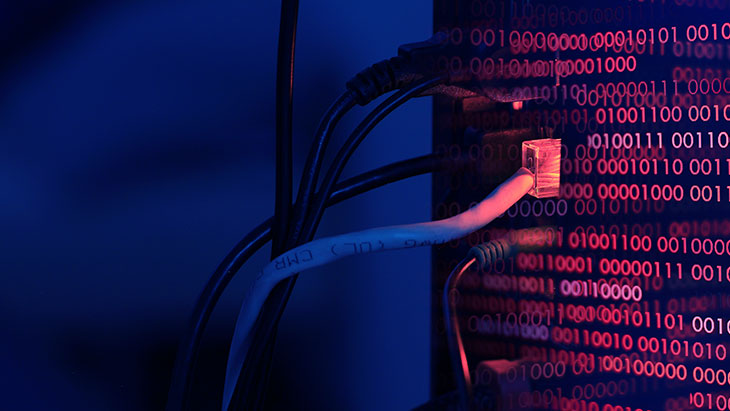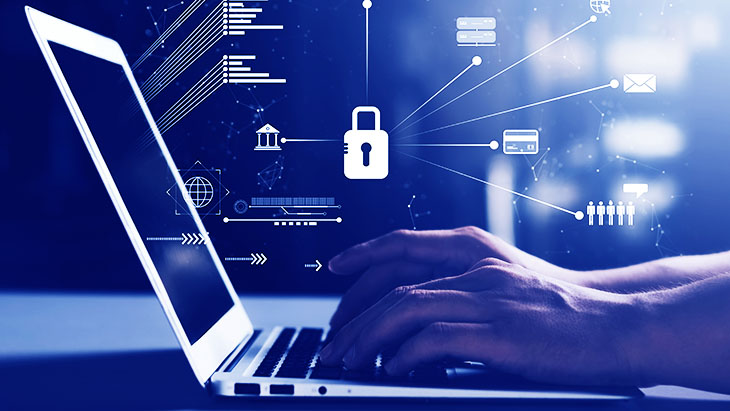
Cybersecurity Trends to Watch Out for in 2023
Digital transformation has significantly impacted daily life practices and the business world, bringing substantial cybersecurity challenges. While hackers are making their attack vectors more diverse and sophisticated every day, the quality of the measures taken for data and access security in daily life and the business world is also questionable.
The series of massive changes, which started with the global pandemic drastically changing the course of the world and continued with a war whose adverse effects we feel from many different angles, naturally affected IT infrastructures and the digital assets stored in these infrastructures. As a matter of fact, this impact not only increased the importance of data security protocols to protect digital assets but also made the relevant protocols indispensable for organizations.
So, what awaits us in cybersecurity in 2023, when cyber threats will become even more critical?
Global Instability Will Systematically Increase Cyber threats
Global instability and the world's growing uncertainty have a negative impact on people's lives. The unemployment caused by this instability, high-interest rates, unstoppable inflation, and falling living standards create emotional, physical, and economic burdens on people. Employees, who are the main dynamics of the business world, may experience distraction and unhappiness for all these reasons.
The decline in employees' mental and emotional states creates a rich resource for cyber attackers. Employees who struggle with many problems, especially unhappiness and distraction, can be more careless about cyber risks, causing data breaches. Moreover, global problems, such as the war between Russia and Ukraine, can create new attack areas for hackers. When all this comes together, organizations must pay close attention to attacks that may arise from outsider and insider threats.
Ransomware Attacks Will Keep Making Headlines
Ransomware attacks are one of the leading outsider threats that hacker groups can cause. Ransomware attacks will likely remain a significant cyber threat in 2023 as they have become more complex and diverse in recent years. Hackers can use customized tactics, techniques, and procedures (TTP) to target particular organizations to obtain large ransom payments. Moreover, this can sometimes turn into state-sponsored attacks. States in conflict can support ransomware attacks against each other, targeting the public and private sectors.
Although states prepare laws on a national basis to prevent this, considering the global scale of the problem, it may be necessary to resort to various cybersecurity protocols for a solution. The main protocols are approaches that place cloud security principles at the center as the management of workflows moves to the cloud environment. According to a study, the average annual cost of ransomware attacks is expected to be 265 billion dollars by 2031. For this reason, you need to pay attention to phishing emails in the cloud environment and not click on links that seem innocent to you because you view them as a harmless pop-up window. Ransomware can cause significant damage to your system, especially in digital workflows that proceed through authorized account credentials and access control over documents as an attack vector.
The Number of Attacks Targeting Mobile Devices Will Increase
The increase in cyber-attacks on mobile devices is one of the essential cybersecurity predictions for 2023. Mobile malware, which uses attack vectors through smartphones, tablets, and wearable technologies, can target devices connected to your organization's IT network and cause a data leak. With attacks on mobile devices increasing 500% in the first few months of 2022, it's essential to be highly vigilant against mobile ransomware attacks, phishing emails, man-in-the-middle (MitM) attacks, and malicious apps.
Since mobile data flow constitutes a significant portion of the total data flow in the network, it is necessary to train employees and raise awareness about hardware and software vulnerabilities in mobile devices. For these reasons, mobile devices constitute a critical step in protecting your organization's IT network with advanced cybersecurity protocols.
The impact of Supply Chain Attacks through Third Parties Will Continue
One of the cyber threats that will be among the cybersecurity trends of 2023 is supply chain attacks. What forms a supply chain attack is security vulnerabilities naturally created by third parties in your IT network and compromised devices. Attackers who infiltrate your IT network using a cybersecurity vulnerability caused by a third-party business partner or stakeholder can easily capture critical data. To prevent this, you need to create an audit mechanism that works on a 24/7 basis to detect suspicious patterns and access to your IT network.
Dark Clouds Over Operational Technology (OT) and Industrial Control Systems (ICS) Will Remain
Cybersecurity predictions for 2023 do not foresee significant changes for Operational Technology (OT) and Industrial Control Systems (ICS). In both areas, cyber threats will continue to cause problems for organizations.
OT can be defined as the set of mechanisms that control and supervise all elements of industrial systems. The most essential element of OT, which includes software and hardware components, is ICS. Attacks against ICS, one of the favorite targets of cyber attackers, can not only cause problems in terms of data breach and access security but also cause physical damage to organizations.
Since OT and ICS have network widths that can have national/international impacts, a successful cyberattack against these components can have dire consequences. For example, a cyberattack targeting a national water system could even disrupt the chemical balance of the water being transported, creating a major crisis affecting millions of people.
AI-Powered Attacks Will Face Counter-Security Measures
Artificial intelligence-assisted attacks are considered one of the most challenging types of attacks to produce countermeasures against as they can be used in integration with multiple attack vectors and involve machine learning. Indeed, organizations are feeling a bit helpless when it comes to finding solutions against AI-powered attacks.
A recent case shared by the UK's National Cybersecurity Centre reveals that an organization paid $8.6 million to recover a mass of compromised data. But what's worse is that the organization made no effort to investigate the cause of the breach. Less than two weeks later, the same cyber attacker infiltrated the IT network again, using the same attack patterns.
In summary, if your organization's IT network does not have advanced cybersecurity protocols, hackers using AI-powered attack vectors do not need sophisticated tools to penetrate your system.
IoT and Cloud Security Will Remain Important
One of the key points about the cybersecurity predictions for 2023 is that IoT and cloud security will remain valuable for organizations. Devices connected to the Internet of Things ecosystem cause the attack surface to expand considerably, making it easier for cyber attackers to find vulnerabilities.
Since these devices are connected to an IT system, attackers who infiltrate the network through the devices can easily penetrate deeper. In particular, attacks on medical objects (IoMT) can facilitate hackers' access to patients and pave the way for capturing their sensitive personal data. The fact that IoT and IoMT devices are usually configured to be connected to a cloud server also poses a serious threat to cloud security.
Metaverse, NFTs and Cryptocurrencies Will Whet the Appetite of Cyber Attackers
In 2023, the metaverse, NFTs and cryptocurrency will continue to dominate the cybersecurity agenda. Binance, the world's largest cryptocurrency exchange, recently confirmed that $570 million was stolen in a cyberattack.
Confirming that a blockchain that serves as a bridge for the transfer of crypto assets between networks was hacked, the company stated that it suffered a loss of 570 million dollars. The attack on Binance's smart chain network revealed that the blockchains to which cryptocurrencies are connected may also be vulnerable.
For this reason, it is important to keep in mind that cryptocurrency exchanges, NFT platforms, cryptocurrency shopping environments and even the metaverse may frequently face cyberattacks. Moreover, the metaverse has an extremely large attack surface due to a large number of software and the use of smart glasses and VR headsets by users. In addition, the fact that the new digital outputs of the postmodern age can be exposed to artificial intelligence-assisted attacks whets the appetite of cyber attackers using machine learning.
You should keep in mind that all these cybersecurity trends will put pressure on both individuals and organizations and that such cyber risks will not only affect end users but also threaten organizations' environments containing sensitive data and privileged accounts connected to these environments.
Since the compromise of privileged accounts and their credentials can plunge organizations into crisis, organizations that host large data masses should use high-level cybersecurity protocols. A possible data breach can create problems in terms of both preserving sensitive user data and protecting the organization's reputation. For this reason, you can use advanced Privileged Access Management systems to protect privileged accounts and control the transactions on your IT network through privileged accounts. Thus, you can control access permissions on the network and track the possible actions of cyber attackers.
Privileged Access Management (PAM) solutions enable organizations to have high-level data security by using advanced cybersecurity methods such as data masking. You can contact us to benefit from the PAM systems we at Kron Technologies offer and get information from our expert teammates on the subject.













